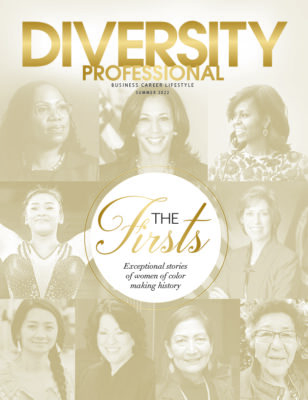Why The Tech Industry Ignores Hugh Profits
The tech sector’s underlying problem with adopting D&I initiatives must be addressed.
Diversity and inclusion are the only business factors justified by the bottom line that are still meaningfully ignored by the tech industry. That’s right. Study after study shows that a diverse and inclusive culture increases profitability significantly. Yet, tech executives still only pay it lip service. So, exactly how profitable is diversity and inclusion?
In her article, “The Problem with ‘Diversity’ and ‘Inclusion’ at Tech Companies,” published on Medium’s Marker vertical November 2019, Afrofuturist writer Naomi Day explains, “Regardless of how one feels about the politics of diversity, the economics of it are hard to argue against. There is plenty of research from places like the American Sociological Organization that shows gender and racially diverse organizations report above-average profitability compared to their peers. A diversity report from Intel estimates the additional revenue in the tech sector as a result of achieving representational racial diversity could be a minimum of $300 billion annually; achieving representational gender diversity in leadership could bring a minimum of $320 billion annually. These are conservative estimates—a study from the Boston Consulting Group shows the innovation coming from companies with more diverse management teams results in a 19% higher revenue.”
$300 billion? $320 billion? 19% higher revenue? Any other business solution would draw instant action. Diversity and meaningful inclusion? Crickets. Silicon Valley is still a largely white and male majority, with a significant Asian population (though it’s vastly underrepresented in upper management). For compelling business and moral reasons, this must change. The unyielding question is always, how?
Day points out that language plays an important role. Places like Amazon and Apple routinely report greater diversity numbers, but much of that data is skewed because of their respective warehouse and retail operations. Day cites the definition of inclusion by the Institute for Community Inclusion as particularly useful.
“Inclusion means that all people, regardless of the characteristics that make them different—be it race, gender, sexuality, ability, other, or some combination of the above—have a right to participate fully in…”
It’s literally a problem we can solve today if we collectively decided to act with intention and adopt a common set of policies geared toward diversity and inclusion.
The problem is vast, and solutions are few. Simply hiring a diversity and inclusion officer will never effect profound change. Much like other white male-bastion industries, tech must turn inward and initiate structural change from the top down. All upper management must participate fully, eagerly, and publicly in resetting a new cultural example.
In his LinkedIn Pulse article, “The Fastest Way to Solve Tech’s Diversity Problem,” Ethan Austin, managing director at Techstars Western Union, states that answer is actually very simple and straightforward. “We make an intentional decision to hire and retain more women and people with diverse backgrounds. Full stop. This isn’t rocket science. It’s literally a problem we can solve today if we collectively decided to act with intention and adopt a common set of policies geared toward diversity and inclusion. Of course, the more difficult problem to solve is how on Earth could we ever round up all the tech CEOs and convince them to change their cultures overnight.”
Austin makes a great point. But his solution requires an additional element. Legislation must be enacted to bring tech CEOs to that table to ensure profound change. Think of it as a tech civil rights movement or tech affirmative action. And it should be made clear to them that if they don’t fix it themselves, the government will be forced to intervene. At its heart, the problem is that even though tech CEOs are leaving money on the table by not making their companies diverse, there is too much money in their pockets right now for them to notice.









